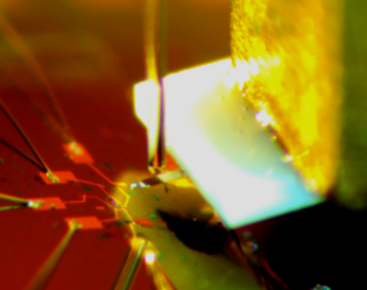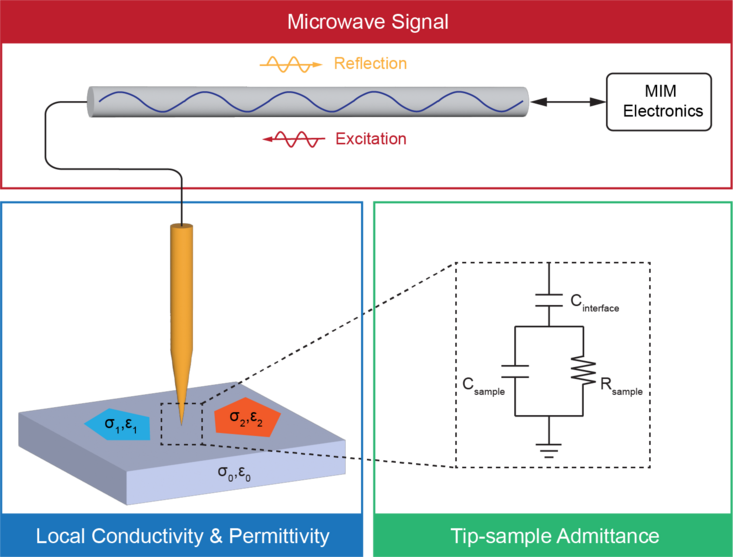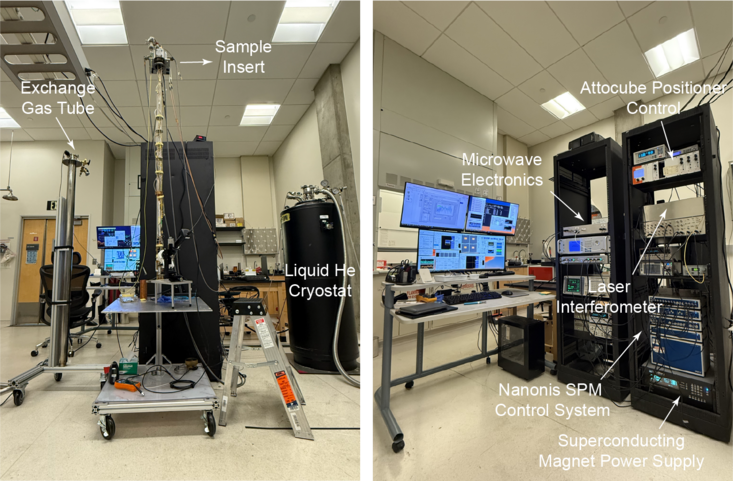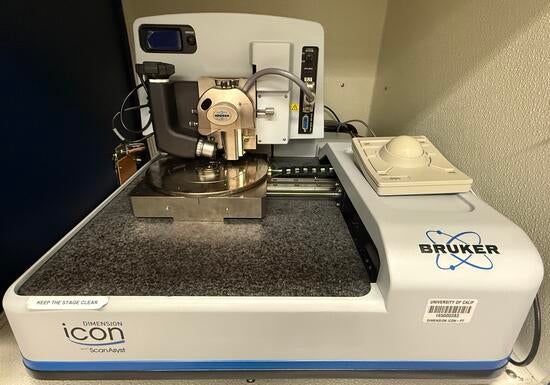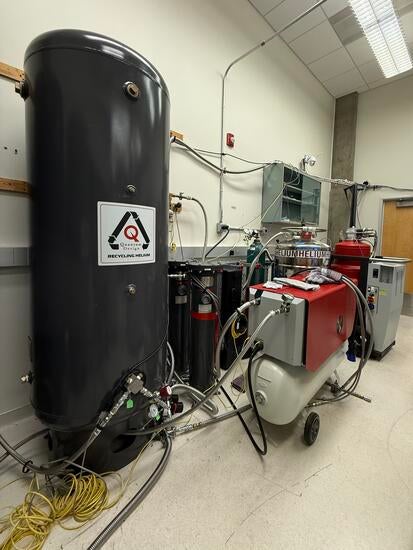Scanning Probe Microscopy
Scanning Probe Microscopy (SPM) is a family of high-resolution imaging techniques that probe the surface properties of materials at the nanometer or even atomic scale. It operates by scanning a sharp tip close to the sample surface while monitoring the interaction between the tip and the sample. Common types of SPM include Atomic Force Microscopy (AFM), Scanning Tunneling Microscopy (STM), and variants like Magnetic Force Microscopy (MFM) and Microwave Impedance Microscopy (MIM), each reveals specific surface characteristics such as topography, electrical, magnetic, or mechanical properties.
-
Microwave Impedance Microscopy (MIM)
Microwave impedance microscopy (MIM) serves as the main experimental technique in our lab. In a nutshell, MIM is a scanning probe microscopy that measures the local admittance between a conductive tip and the sample. A microwave excitation is sent to a conductive scanning tip placed near the sample surface, and the reflected signal provides information about the sample’s local conductivity and permittivity. As the tip scan across the sample, changes in the MIM signal will be proportional to changes in the local tip-sample admittance. More details about this technique can be found in this review article: Nat. Rev. Phys. 4, 61-74 (2022).
-
Current SPM Facilities
Currently, there are three SPM systems in our lab: a cryogenic SPM system built around a wet cryostat from Janis Inc. (Janis-SPM), a cryogenic SPM system built around a wet cryostat from Cryomagnetics Inc. (CMI-SPM) and a room temeprature Dimension Icon SPM system from Bruker (Bruker-SPM).
Janis-SPM
The home-built Janis-SPM system operates at a base temperature of ~5 K and equips with a superconducting magnet capable of generating a magnetic field up to 9 T.
CMI-SPM
The home-built CMI-SPM system is currently undergoing testing at liquid nitrogen temperature (77 K). Once fully operational at liquid helium temperature, it is expected to achieve a base temperature of approximately 5 K and support magnetic fields up to 9 T.
Bruker-SPM
The commercial Bruker-SPM system is capable of a wide range of AFM modes (contact, tapping, c-AFM, KPFM, PFM, TFM, MFM, EFM, etc.) at ambient conditions. It also serves as a shared platform within UCR research community. Interesting users are welcome to contact us for more information.
Helium Recovery System
A Quantum Design helium recovery system is used to support the simultaneous operation of three cryogenic measurement systems.
